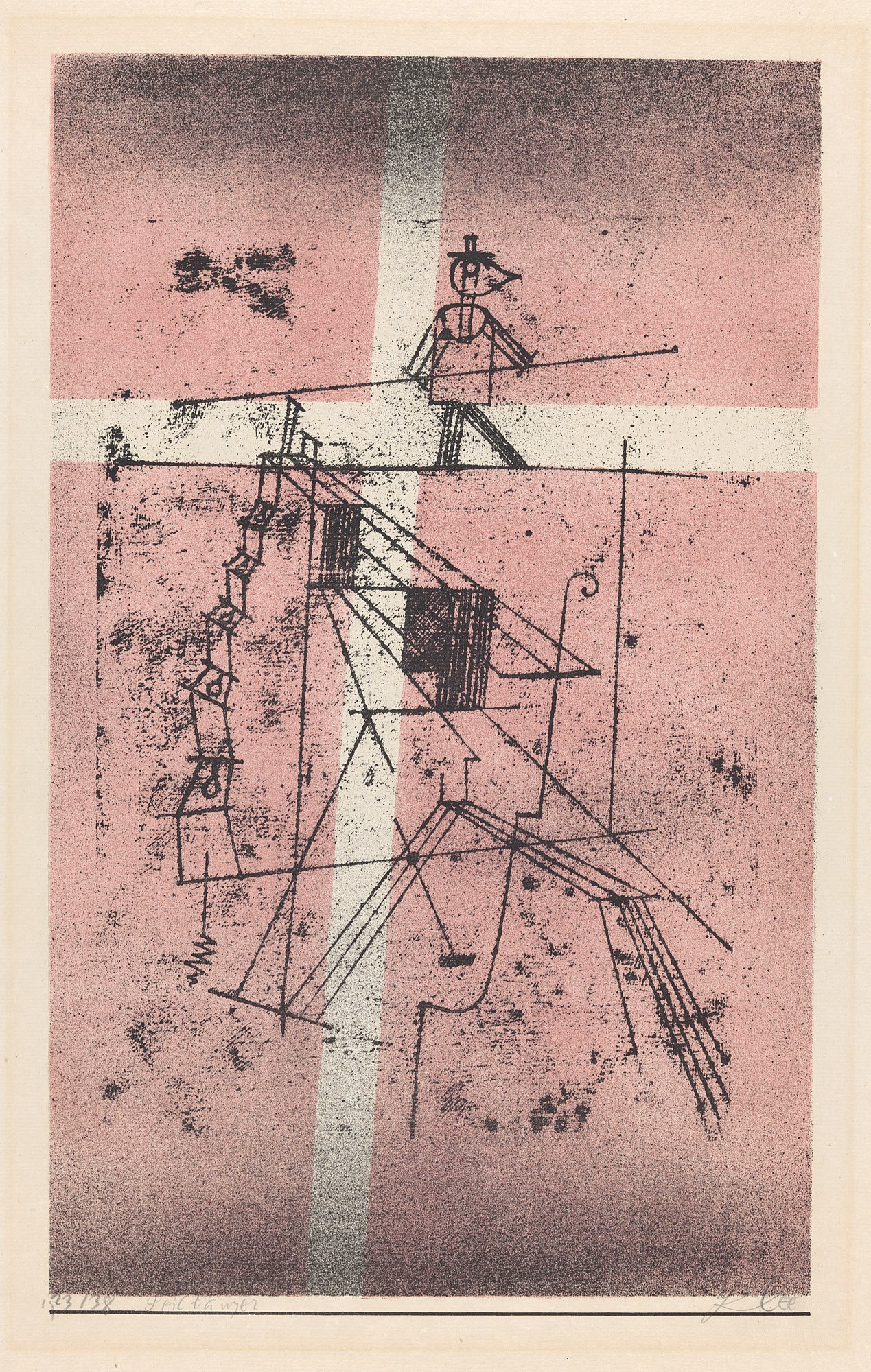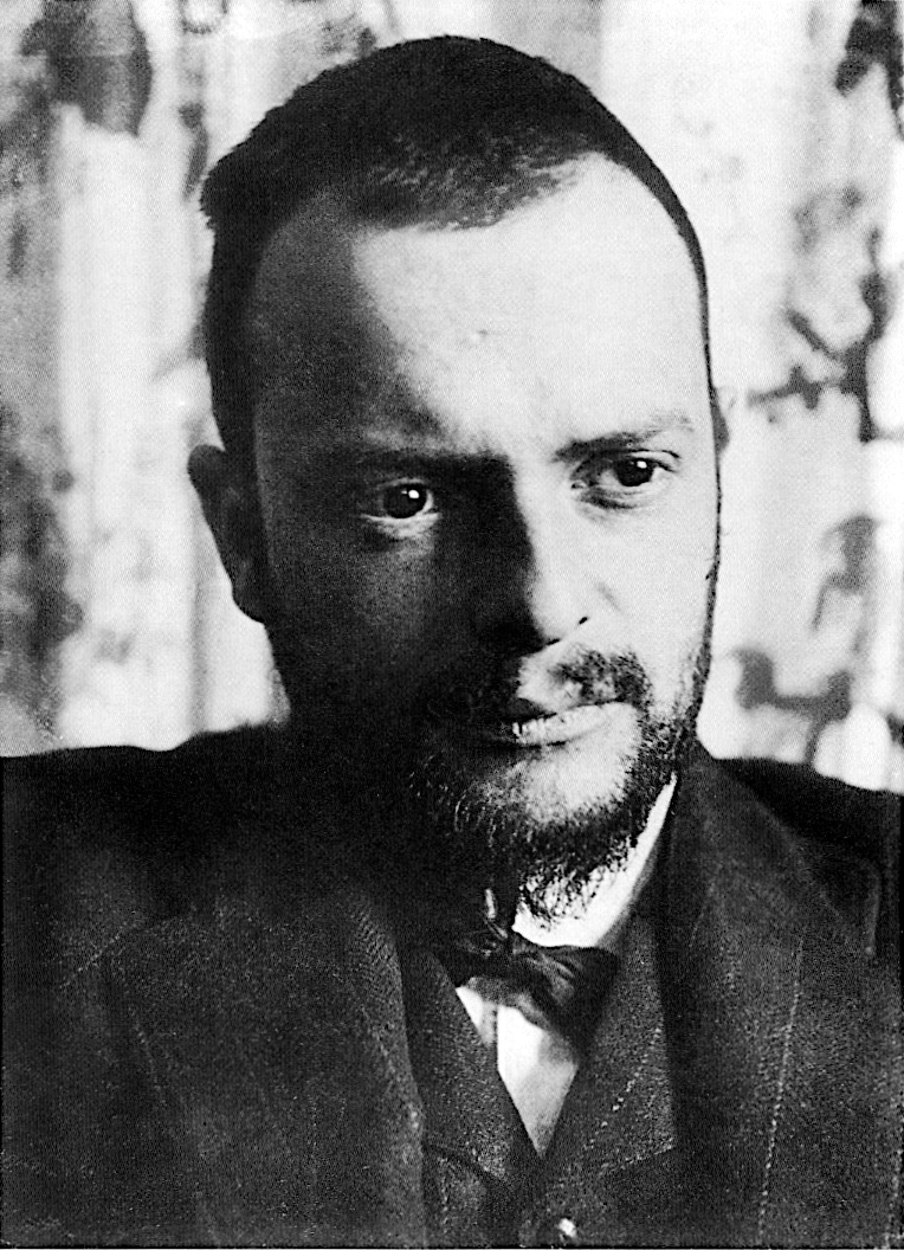Today is our last Sunday with Zentrum Paul Klee's collection. But it doesn't mean we won't feature their pieces from time to time :) If you spend your vacation in Europe, hope you'll have a chance to pay a visit to this miraculous museum in Bern, Switzerland. Thank you for all your positive feedbacks and a special thanks to Mr. Martin Dahinden Ambassador of Switzerland to the United States of America for the unexpected, great support on our Twitter account. We dedicate him this last, ethereal art piece.
A small acrobat balances high in the air on a rope. The construction, upon which the rope is held taut, appears very flimsy. A small change of tension would be enough to make the rope sway and the small acrobat would be in danger. The situation can certainly be interpreted autobiographically, in that we recognise Paul Klee as the tight-rope walker, and, in the fragile construction, the power relationships at the Bauhaus. The artistic and idealistic orientation of the Bauhaus was characterised by violent conflicts and fluctuating power structures. The geometric structure of the fragile frame could be interpreted as the influence of the constructivists - the face in profile as the influence of Oskar Schlemmer, analogous to the Bauhaus logo he had created. And over all these conflicts stands the artist Paul Klee, who does not want either himself or his art to be involved but who must constantly reorientate himself and find the balance between the currently dominant forces. The cross, leaning slightly to the right in the background, underlines the fragility of his situation.
Klee described his Tightrope Walker as the “most extreme realisation of the symbol of the balance of forces”. The tightrope walker achieves equilibrium on the fragile, swaying balance by means of a balance pole. Klee noted this in his Pictorial Morphology: “The feeling of the vertical is alive in all of us, so that we don’t fall and when necessary, we stretch our arms out in correction and equalise the mistake. In special circumstances we extend them horizontal like the tight-rope walker with a balancing pole.” With the profile of a human head which can be made out in the midst of the fragile construction, Klee makes clear that he understands balance not just as a physical but also as a mental tightrope walk. From the tightrope walker, drawings as well as watercolours and uncoloured oil phase pictures have been preserved. In addition Klee had the picture reproduced as a lithograph.
We need your help - please donate and help us release a new version of the app: http://support.getdailyart.com




The Tightrope Walker
oil transfer drawing, pencil and watercolour on paper on cardboard • 48,7 x 32,2 cm
 Paul Klee
Paul Klee